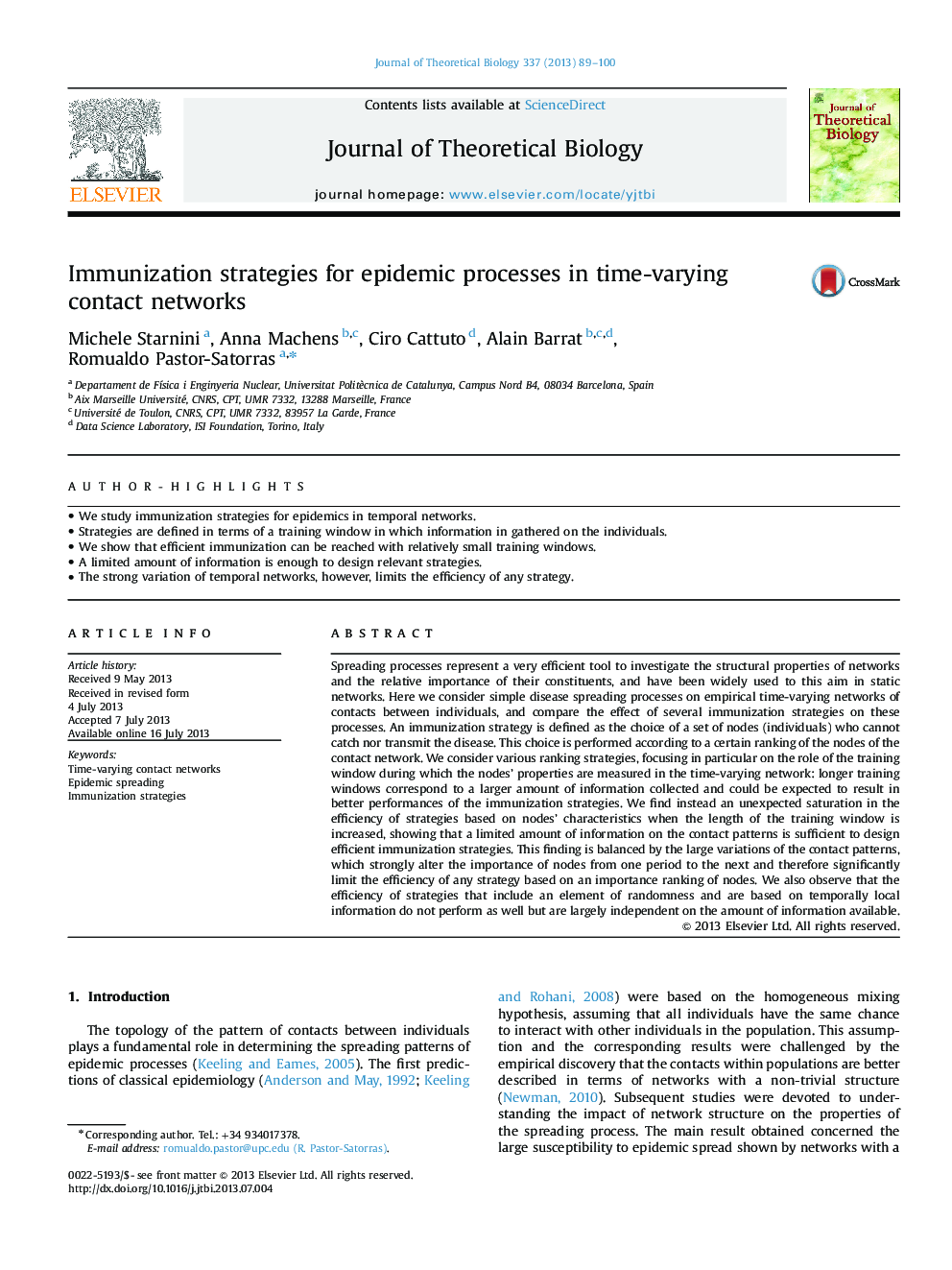| Article ID | Journal | Published Year | Pages | File Type |
|---|---|---|---|---|
| 6370769 | Journal of Theoretical Biology | 2013 | 12 Pages |
Abstract
Spreading processes represent a very efficient tool to investigate the structural properties of networks and the relative importance of their constituents, and have been widely used to this aim in static networks. Here we consider simple disease spreading processes on empirical time-varying networks of contacts between individuals, and compare the effect of several immunization strategies on these processes. An immunization strategy is defined as the choice of a set of nodes (individuals) who cannot catch nor transmit the disease. This choice is performed according to a certain ranking of the nodes of the contact network. We consider various ranking strategies, focusing in particular on the role of the training window during which the nodes' properties are measured in the time-varying network: longer training windows correspond to a larger amount of information collected and could be expected to result in better performances of the immunization strategies. We find instead an unexpected saturation in the efficiency of strategies based on nodes' characteristics when the length of the training window is increased, showing that a limited amount of information on the contact patterns is sufficient to design efficient immunization strategies. This finding is balanced by the large variations of the contact patterns, which strongly alter the importance of nodes from one period to the next and therefore significantly limit the efficiency of any strategy based on an importance ranking of nodes. We also observe that the efficiency of strategies that include an element of randomness and are based on temporally local information do not perform as well but are largely independent on the amount of information available.
Related Topics
Life Sciences
Agricultural and Biological Sciences
Agricultural and Biological Sciences (General)
Authors
Michele Starnini, Anna Machens, Ciro Cattuto, Alain Barrat, Romualdo Pastor-Satorras,
